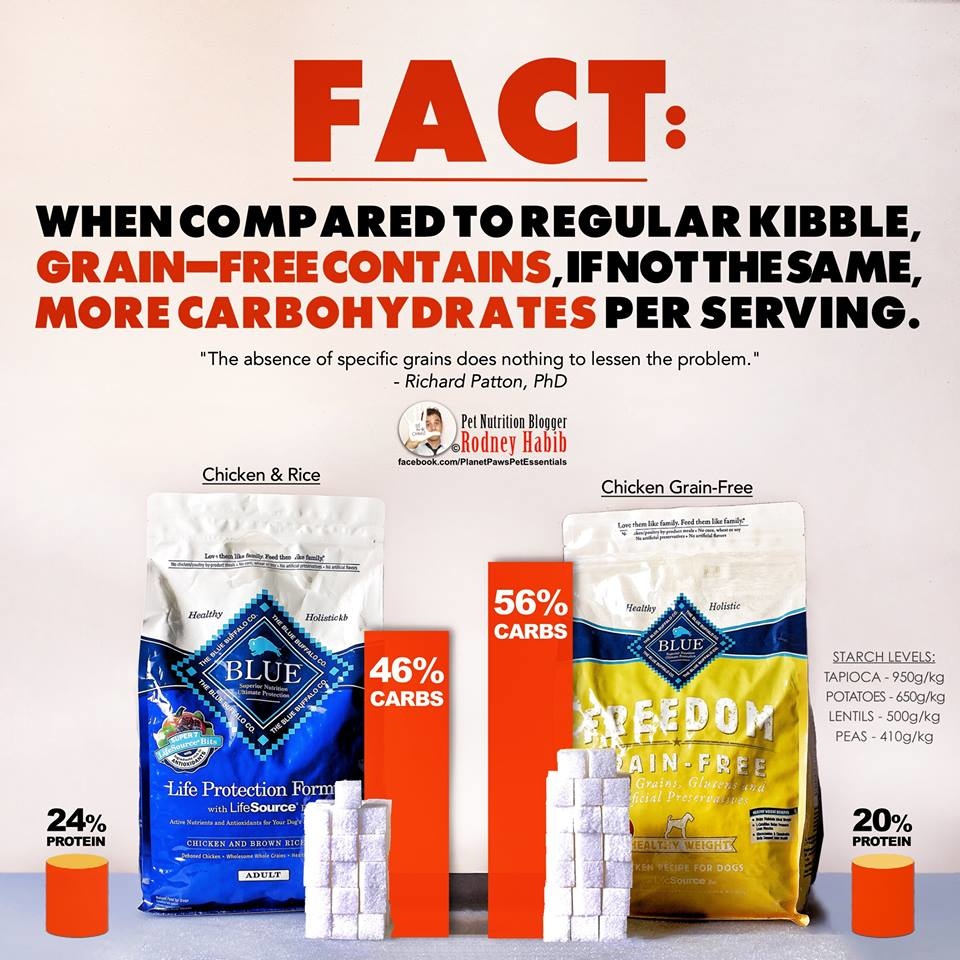無榖飼料 = 無澱粉飼料!?
THE GRAIN-FREE GIMMICK: IS BUYING A “GRAIN-FREE” PET FOOD REALLY A BETTER VALUE FOR YOUR BUCK?
“ ‘Grain Free’ is a descriptor for pet food intended to mean no corn, soy, wheat, barley or oats. This is the epitome of false security and I don’t know who to criticize more loudly, the consumer that buys it or the marketer who pushes it. “ - Dr. Richard Patton, PhD
With an obesity epidemic on our hands (60% of pets), along with the skyrocketing statistics surrounding diabetes and cancer, is grain-free pet food really the answer?
Today, grain-free pet foods account for nearly 30% of pet food sales in the retail channel, hitting almost 24% growth in 2014, adding up to a total of US$2.2 billion sold in US pet stores.
With more and more pet parents flooding to these type of foods in hopes of remedying allergies and obesity, why are things getting worse and not better for today’s kibble-fed pet?
According to Dr. Patton, pet parents are missing the point:
“First of all, the problem is not grain, it is SOLUBLE CARBOHYDRATE, and the absence of specific grains does nothing to lessen the problem. (I know there are those who condemn corn specifically, and its vast monoculture may indeed predispose some deficiency in its nutrient makeup. But I assure you this is minor compared to the problem of excess starch.) The starch needed for the manufacturing process is obtained in other ways, such as potatoes, rice or peas.”
It’s the starch (aka sugar) levels that are the problem in pet food, not so much the grain aspect (although most grains are beaming with starch!).
So, with a carb average in pet food being around 40%, is this a good level? Or is it too high for an obligate (cat) and facultative carnivore (dog)?
Well, according to researchers, the average evolutionary diet of the dog or cat was around 4% carbs!
“So here we come to the fundamental point: Not only is the modern dry diet higher in soluble carbohydrate than anything animals ever ate throughout evolution, but also the animal’s biological machinery was perfected to eke out a survival in a world with near constant lack of soluble carbohydrate.” – Dr. Patton
Furthermore, according to Dr. Jean Dodds, high glycemic starches and cereal grains used in pet foods are the leading cause of the rampant obesity and chronic disease pervading the canine population. She believes these starches have resulted in the decades-long deterioration in the health of our nation's dogs and landed us right in the middle of a national canine health crisis, where obesity and chronic disease are the norm, not the exception.
The bottom line here, my fellow pet parents of the planet, is that pet food manufacturers switched to grain-free foods because we, the public, demanded it (vilifying fats and grains), not because they wanted too.
Basically, every time our pets would itch or scratch, we would self-diagnose, and grains had to be the problem. So we set out in search of grain-less foods and, in return, the manufacturers offered us starchy vegetables and legumes to compensate.
Why?
Because the kibble machinery cannot function without starchy carbohydrates in the pet food mix. It’s impossible. Well, unless you are a raw food manufacturer.
Next time you head out to buy a bag of food, compare the carb contents of the grain-free bag you’re about to purchase, with the other grain-based bag the manufacturer offers. You will see both bags have the same amounts of carbs & starches which, ultimately, your pets’ bodies will convert to sugar, leading to a whole host of future problems.
Moral of the story: don’t be duped and fall for the grain-free hype! If you want to drop all those sugary starches, try switching to a fresh, clean, whole food diet rich in ethically raised meat-based proteins.
Rodney Habib - Pet Nutrition Blogger
"An educated, informed and well-researched community of pet owners can only put more pressure on the pet food industry to be better! When pet owners know better, they will only do better!"













